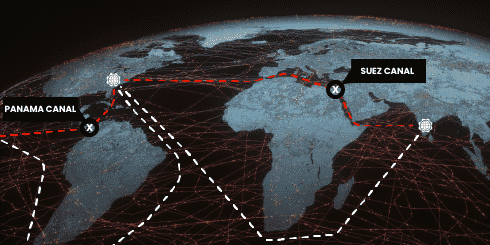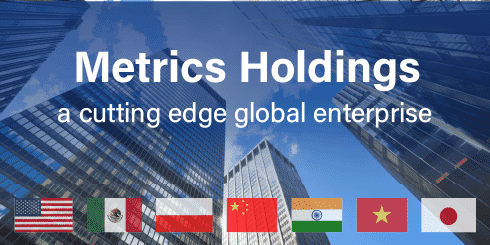6 Reasons Why Near-Sourcing is NOT a Sustainable Solution

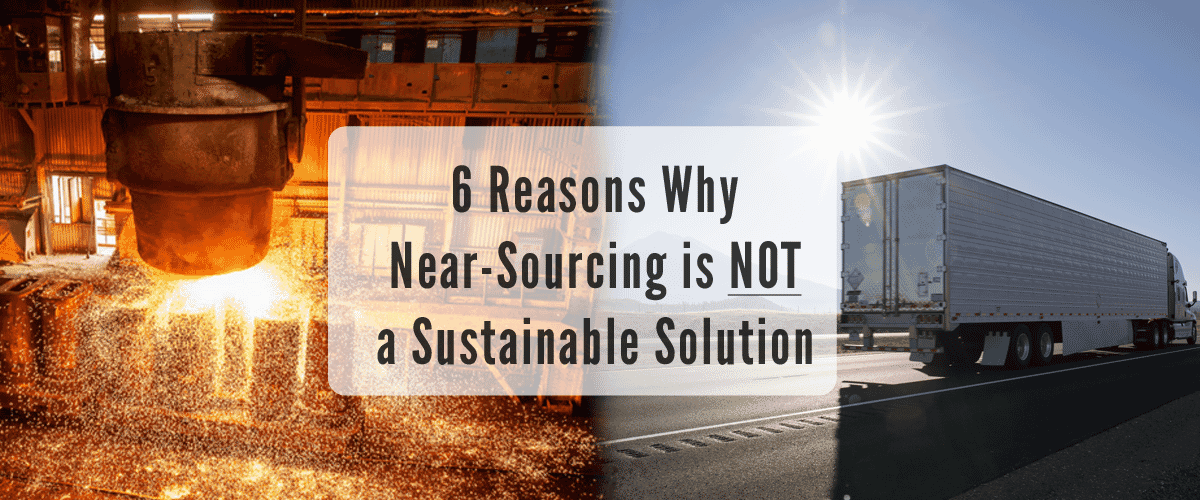
A Special for Report Buyers, Planners, Sourcing Specialists, and Supply Chain Professionals
Executive Summary
NearSourcing is a strategy. Like any strategy, it’s not a one-size-fits-all solution. It has its pros. It has its cons.
So, if you think NearSourcing is a one-and-done strategy guaranteed to save you money, think again. Even in lean operations, few manufacturers take a close enough look at the real cost. Don’t make this mistake.
Any manufacturer looking only at initial cost savings is setting itself up to encounter some pitfalls. One such pitfall is not comparing total costs. For example, it’s fair to say that per-part costs go up as the number of production changeovers increases. These increases, however, are not identical across the board. NearSourcing parts in the U.S. goes up substantially over Global Sourcing the same parts in China or India. As an example, in a cost comparison of tooling development for an automotive manufacturer, a U.S.-based NearSourcing supplier yielded longer lead times and a 70% higher cost over the exact same development performed in China or India.
Still not convinced? Consider “hidden” or overlooked costs, such as labor. It’s also no secret that higher labor costs result in higher costs for the deliverable. It’s also no secret that labor costs vary widely among suppliers in the U.S., Mexico, and China. For this reason, offshoring can offer substantial cost savings. Let’s look at the automotive manufacturer again. U.S. labor is top-dollar. Mexico comes in second – but with labor 73% lower than the U.S.. Offshore suppliers come in even lower; 82% less than the U.S.
Which is why the key to deciding if NearSourcing is a viable strategy is to use actual facts and figures to play the strategy clear out to the end game. Then, and only then can you make sure you’ve made the right, cost-effective choice.
This special report is designed to walk you through a real-world example that shows what the true cost of NearSourcing can be. Based on the experience, observation, and analysis of a world-leader in supply chain, this report showcases six things you should know before choosing NearSourcing as your primary strategy.
Here are the six surprising things this white paper will cover:
- More (Costly) Production Changeovers
- Expensive and Time-Consuming Tooling Development
- Bigger Commodity Costs
- Higher Tool Set-Up Expenses
- Increased Trucking Rates
- Inability to Adequately Handle High Mix, Low Volume
Keep reading to find out what you don’t know about NearSourcing – and what it could be costing you.
Introduction
Every day, supply chain professionals are being asked to do more to support continuous improvement and leaner operations. Perhaps you’ve been asked or tasked with finding a solution to improve supplier performance. It’s possible you’ve searched for a magic lean supply chain solution that would bolster vendor communication, shorten lead times, and reduce costs. And maybe, just maybe, you thought you found it in a strategy known as NearSourcing.
What Is NearSourcing?
NearSourcing (Near-Sourcing or Near-Sourced) is a business strategy that involves establishing or moving some or all of your operations within proximity of where your end-product is sold. While not the polar opposite of Outsourcing – which means to procure goods and services from outside your organization, often from foreign or lower-labor-wage suppliers – NearSourcing is an alterative strategy.
In fact, there’s been great impetus for NearSourcing over the past several years. Manufacturers are increasingly using NearSourcing all types of products and commodities. And, in some instances, rightly so.
NearSourcing is absolutely the best solution for manufacturers to procure their needs. It reduces lead times, it’s easier to manage communications with domestic producers, and it’s easier to audit suppliers, as well as visit them for project and quality inspections.
Great! So, what’s the problem?
The Great Yet Unsustainable Solution
The problem is that NearSourcing is, frankly, impractical.
At the risk of offending some companies and buyers, we at MES, contend that NearSourcing is an unsustainable solution.
We don’t take lightly this bold statement. In fact, we back it up with observational study and statistical analysis rooted in our time-tested, proven solutions as a full-service provide of global manufacturing and supply chain management services.
Please hear us when we say that we’re all-in for domestic production close to customers. We’re also sold on preserving domestic jobs and the industrial economy.
And yet, we must look at the reality and practicality surrounding NearSourcing. The truth is, commercial challenges abound if your only strategy is NearSourcing.
How NearSourcing Costs More than You Think
To illustrate our point, we’ll crunch some numbers. But first, let’s assume something we all know to be true:
Today’s projects are far more complex than any project from even a few short years ago.
Take, for example, Monterrey Motors. It’s 2015 and this automotive manufacture has a mid-size SUV with 200,000 annual units. The options are pretty simple: two engines, two transmissions. Fast-forward to 2021 when both the world and Monterrey Motors have changed. Dramatically.
Today Monterrey Motors offers far more options in its lineup, including two engines, four transmissions, a hybrid, and a special electric vehicle model.
A chassis bracket used across all models looks like this: Please see chart below.
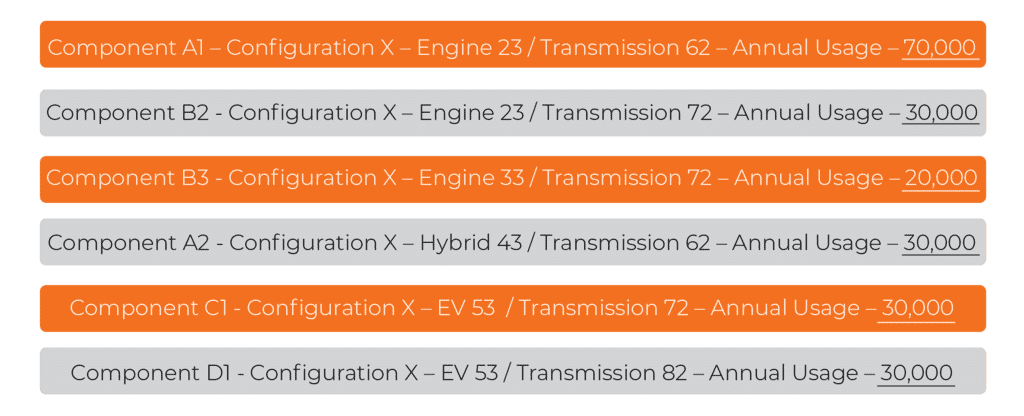
From 2015 to 2021, total bracket requirements stayed about the same, 210,000. Now, however, there are four different versions, of which one tool makes B2/B3, another A1/A2, still two others, C1 and D1.
To be clear, Monterrey Motors now needs four different tools vs. just one. Regardless of sourcing, that’s a significant leap. However, with NearSourcing, more tools equates to more changeovers that cost both time and money.
Reason #1: More (Costly) Production Changeovers
Customers and consumers expect more options and more customization. With more and more customization comes higher numbers of production changeovers.
As if that weren’t enough, there also are serious constraints in capacity for building quality tools in the U.S. and Mexico versus China and India. The fact remains that the average toolmaker in the United States makes around $40 per hour; not to mention these craftspersons are in short supply in almost all geographic locations.
Now let’s connect that to the numbers.
A heat sink die casting tool (aluminum part – part size – 8” x 10” x 4” deep with moderate ribs and other features – weight – 2.2 kgs) will cost approximately $28,000 in China and India with a lead time of 7-8 weeks.
That same tool made in the United States? The cost will be about $105,000 with a lead time of 14+ weeks. That’s almost quadruple the cost and, at a minimum, double the lead time. See chart below.
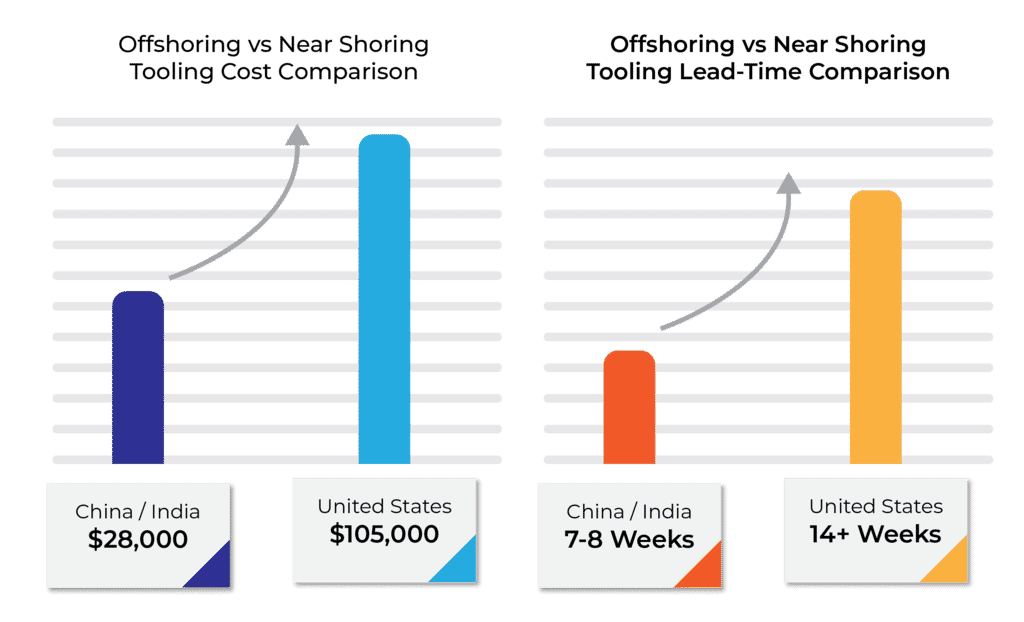
These factors, coupled with a glaring lack of apprenticeship programs across the U.S., plus major reductions in all kinds of manufacturing – including die castings, forgings, injection molding, rubber molding, and sintering – makes it extremely difficult to source skilled toolmakers. It also makes it very expensive, if not cost-prohibitive, to have these toolmakers on staff.
For Monterrey Motors, this is what the cost-comparison looks like to develop the tooling required to manufacture all versions of the brackets its needs for all of its current SUV models.
4 tools / 6 versions in U.S. vs. China:
U.S. – $400,000 (14-16 week lead time)
China or India – $112,000 (7-8 week lead time)
Capital investment savings with global supply chain vs. NeaSsourcing: $288,000 – an almost 70% cost savings on tooling development alone.
Reason #2: Expensive and Time-Consuming Tooling Development
Associated costs for tool building include manpower, changeover, and downtime. To achieve this with NearSourcing in the U.S. or Mexico, it’s as high – or higher – than China or India.
Most commodities, including aluminum, iron, and plastics, rely on a steady stream of waste, or what we now call recyclable material. For decades, the U.S. was the largest producer and exporter of recyclable material.
However, when tariffs hit hard in 2018, the U.S. was forced to shut down its export of much of its recyclable material to China. As a result, China’s commodity prices rose to significantly higher levels than U.S. This trend lasted for nearly 18 months.
However, when tariffs hit hard in 2018, the U.S. was forced to shut down its export of much of its recyclable material to China. As a result, China’s commodity prices rose to significantly higher levels than U.S. This trend lasted for nearly 18 months.
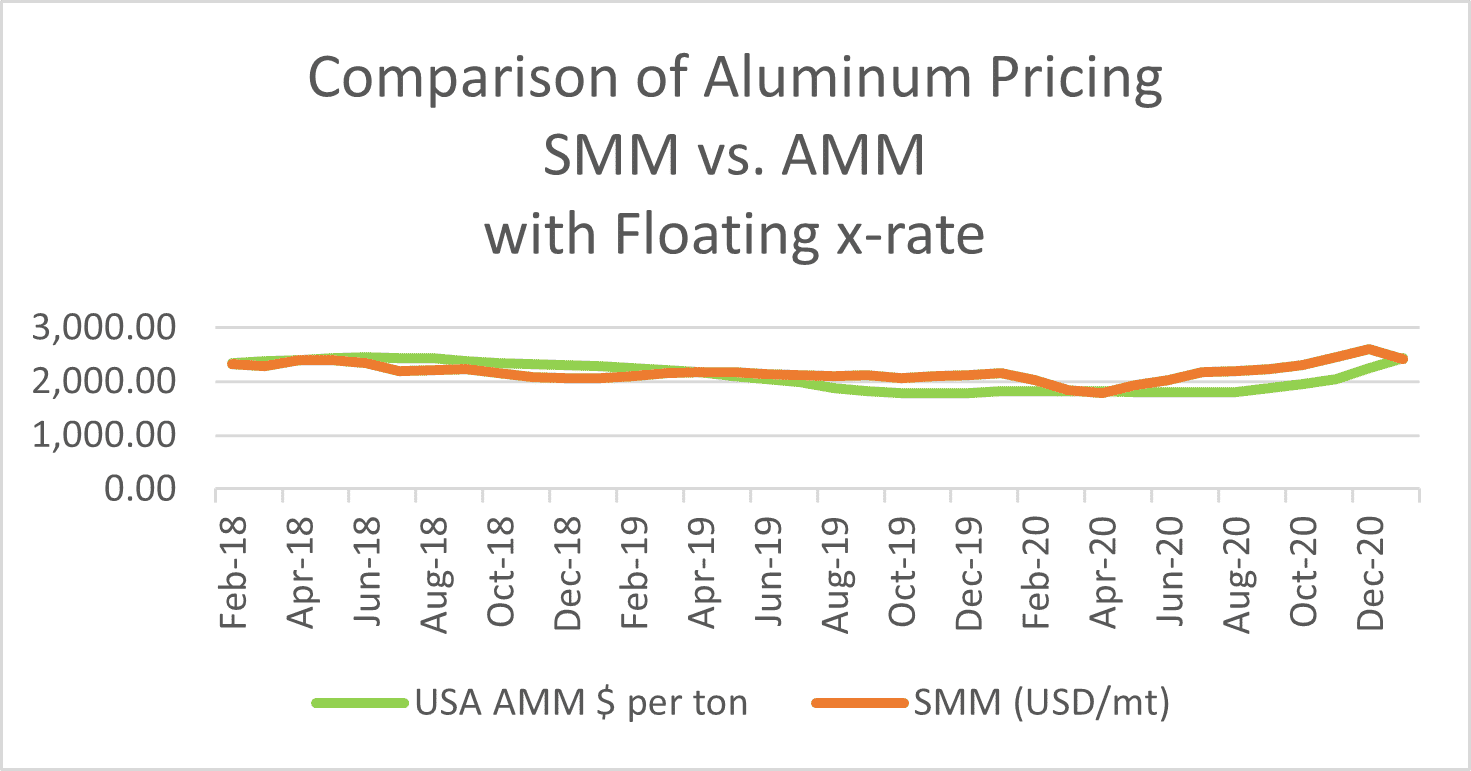
Now, with some recent relief, the U.S. recycling materials market is, once again, shoring up. Like it or not, this will increase the price of raw materials for local die casters. In addition, the price of oil and, by extension, polymers, has a tendancy to fluctuate globally. These fluctuations vary widely based on local currency rates.
AMM: American Metal Market Index
SMM: Shanghai Metal Market Index
Reason #3: Bigger Commodity Costs
With a NearSourcing strategy, it is far more than challenging to pick a single supplier that can remain competitive year-over-year to meet production demand.
Continuing with the numbers, tool set-up expenses for each of the versions of Monterrey Motor’s SUVs, based on production of two weeks’ worth of components during each set-up is as follows:
Tool set-up requires a minimum of 4 hours to dismantle the tool, load new tool, heat up the tool, run initial samples and set-up a production run.
NearSourcing Vendor (Based in Michigan) – Tool Set-Up – 4 hours x $45/hour for labor – 2,000 Pieces Run = $180/2,000 = $0.08/part
Offshore Supplier – 4 hours x $8/hour for labor – 2,000 Pieces Run = $32/2,000 = $0.016/part
Mexico Supplier – 4 hours x $12/hour for labor – 2,000 Pieces Run = $48/2,000 = $0.024/part

Reason #4: Higher Tool Set-Up Expenses
The numbers speak for themselves: labor costs alone make NearSourcing tool set-up far costlier than offshore options.
Let’s say you, like Monterrey Motors, have a supplier in Mexico and you want to ship your products back to the U.S. where your customers are. Shockingly, trucking rates over the past 24 months are pretty much equivalent to what shipping rates from China are.
Monterrey, Mexico to Columbus, Ohio, U.S. – Truckload – Dry Van – $4,900 – 6-8 Days Transit Time
While costs initially appear similar, trucking cost increases over the last couple of years have been staggering. Even in the wake of lower gas prices, these increases are due, in part, to changes in trucking times and other requirements. The trend, unfortunately, will likely continue, too.
Reason #5: Increased Trucking Rates & New Technologies
All indications are that truck transport of products is an unsustainable cost trend due to e-commerce growth, as well as a real constraint in the number of drivers taking up the occupation.
Due to increases in new technologies, such as electric vehicles, all automotive platforms are highly fragmented with full IC engine, transmission, hybrid, and electric options. Original Equipment Manufacturer (OEM) General Motors, for example, recently announced its intention to convert 100% of its fleet to EV (electric vehicle) models.
Other OEM’s are likely to follow, too, in an effort to catch up with Tesla, currently the world’s best-selling EV. Due to this rapidly evolving technology, as well as fragmented needs for various platforms, most OEM’s are facing the need to purchase components in much smaller volumes yet in far more configurations.
Hence, the number of components is anticipated to be exponentially higher than what it was just 3, 4, or even 5 years ago. In fact, historically, domestic manufacturers have not been well-equipped to change tooling quickly and have often been reluctant to take on projects with such a. high-mix variety. No longer. High mix, low volume is here; and here to stay.
Reason #6: Inability to Adequately Handle High Mix, Low Volume
OEM and Tier 1 purchasing organizations are stretched in coming up with a viable supplier strategy to deal with this unprecedented explosion in the range of volumes and configurations.
If Not NearSourcing, Then What?
While NearSourcing is often touted as the answer for flexible, fast-paced production, it is not a universal solution or fix. Yes, sometimes NearSourcing makes sense. Sometimes NearSourcing response is quicker.
However, for many – perhaps even you – the costs associated with NearSourcing are far too high, making NearSourcing as the sole strategy unsustainable in the long run.
Our experience has shown that the right strategy is a blend of NearSourcing with Global Sourcing activities.
Keep in mind that optimized and best-case supply chains are built one way: To take advantage of cost economies in whichever part(s) of the world where they’re from.
We’ve clearly demonstrated that in the case of Monterrey Motors, it would be a costly mistake to source/develop/build anywhere but China.
Using a flexible Global Sourcing strategy rather than a fixed, often impractical NearSourcing or Outsourcing option lets manufacturers like Monterrey Motors – and you – achieve the greatest amount of sustainable savings.
Based on the facts and figures, it would be best to have dual sources in the U.S./Mexico vs. India/China/Eastern Europe/Vietnam to make this component because it:
- Optimizes the weighting of purchase from 50/50 to 80/20
- Provides the best cost option every quarter
- Invites a steady stream of supply
- Results in the lowest amount of inventory to meet regular and spike demands
World trade may have struggled through specific political and economic changes, yet goods and services always find the most economical ways to get to their customers.
Bottomline? Global Sourcing, even when combined with NearSourcing, is a more rational and practical choice compared to a NearSourcing-only strategy.
Conclusion: Choose Wisely
This special report outlined six surprising reasons NearSourcing is not the be-all, end-all solution for manufacturing. Certainly, NearSourcing has its place.
And that place is a combination strategy of NearSourcing and Global Sourcing.
MES offers global manufacturing and engineered supply chain solutions. So, whether you’re a Buyer, Planner, Sourcing Specialist, or the Director of Supply Chain, MES can help guide you to not just good and better options, but best-in-class options to save you time and money in both the short- and long-term.
Ensuring sustainability amidst an ever-changing arena is crucial. As Supply Chain and sourcing continues to evolve, rest assured that MES will continue to help you source the goods and services you need in a way that’s profitable – and sustainable – for your bottom line.
To learn more about MES global sourcing solutions, including how to integrate NearSourcing into your Global Sourcing strategy, contact us today.
Important Disclosure: MES is a global supply chain company with offices and sourcing abilities in the U.S., Western Europe, and Mexico, as well as a provider of lower cost options in China, India, Vietnam, Taiwan, and Eastern Europe.


